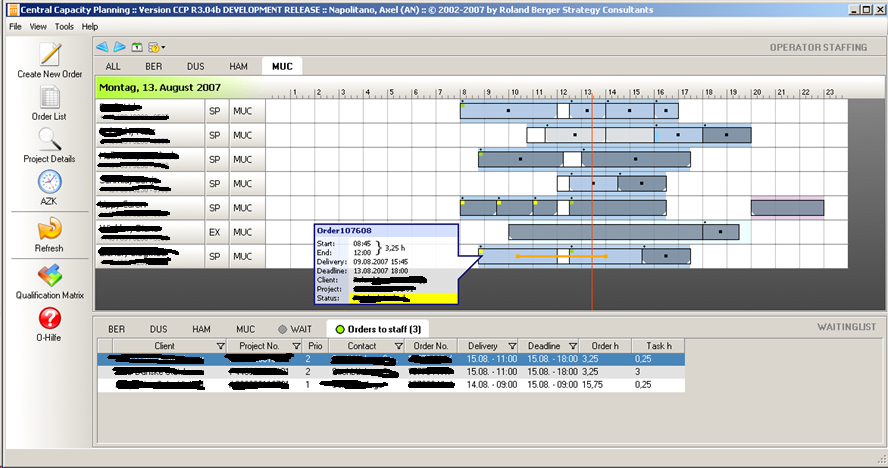
In the realm of software development, the demands on a developer go beyond mere coding. To truly stand out and make a mark, one has to delve deep into software architecture and resource planning. This intersection is where truly remarkable software applications come into existence. The Central Capacity Planning (CCP) software is a testament to this ideology.
Software Architecture and Development: The Birth of CCP
Central Capacity Planning (CCP) is a groundbreaking software development that stemmed from my tenure with Roland Berger Strategy Consultants. What makes CCP unique is its ability to provide real-time-based, cross-location visual task planning. This is not just a mere allocation of tasks; CCP considers the complexities of different time zones, as well as the presence and absence of resources, ensuring optimal task distribution and efficiency.

Initially crafted alongside a colleague, this software suite, which includes a client and server application, various interfaces, and auxiliary programs for vigilant monitoring, saw its inception between 2002 and 2007. It was meticulously coded in the programming language C# using VisualStudio.NET, starting with its 1.0 beta version, and utilized P/SQL.
The Evolutionary Journey of CCP
Reflecting on the journey of the CCP, its initial versions were a testament to the technological advancements of the time. However, like any nascent software, the CCP had its teething problems. The user interface (UI), predominantly my design, was admittedly a bit unstable and slow. This could be attributed to the steep learning curve I faced with the new programming language. Moreover, grappling with a beta version of the then-novel VisualStudio.NET certainly presented its challenges.
But, it’s essential to understand that CCP was not conceived in a vacuum. Its lineage can be traced back to the “Online Capacity Board” (OCB), a software I had the privilege to develop in 2001. The OCB, even in its infancy, showcased an object-oriented approach, albeit in a rudimentary form, using PHP. A fun tidbit for tech enthusiasts: The frontend of OCB was innovatively crafted using XML, which was then transformed to HTML via the XSL method, powered by the cutting-edge Sablotron extension of the time.
The Role of a Software Architect: Balancing Development and Resource Planning
Whether you’re a budding software developer or an experienced software architect, understanding the intricacies of resource planning is paramount. The CCP’s journey from its inception as the OCB to its current state underscores the significance of aligning software architecture with efficient resource planning.
In conclusion, CCP’s evolution is a testament to the beauty of software development when it marries astute architectural decisions with strategic resource planning. For those looking to embark on a similar journey, remember: It’s not just about coding; it’s about envisioning, planning, and innovating.
Header Photo by Alex Wong on Unsplash







